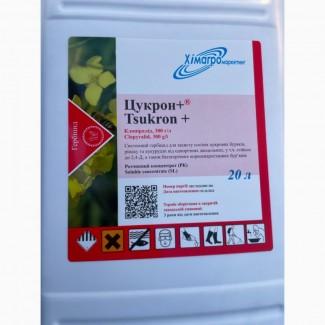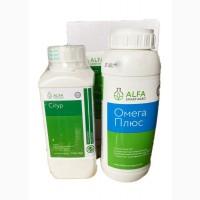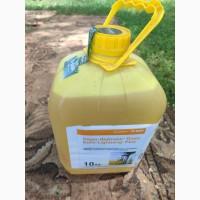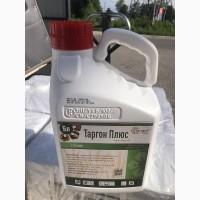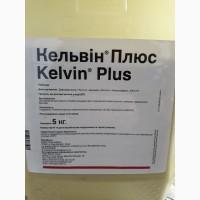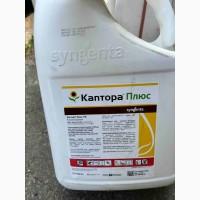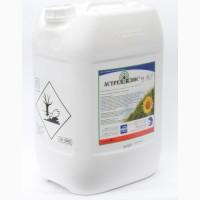/ Fertilizers and plant protection products / Herbicides / Zukron Plus - Unique proteocellular systemic...
Sell / buy
Zukron Plus - a unique proteose system herbicide for the protection of sugarcane crops, Kyiv region.
Price14.25$
Region:all of Ukraine,
Kyiv region region.
(Vyshgorodok)
Updated:
Herbicide Zukron Plus Khimagromarketin
A unique proteosote systemic herbicide for the protection of crops of sugar beets, grain ears, corn, rapeseed and other agricultural crops.
Active substance: clopyralid, 300 g/l
Mode of action: systemic
Form of the drug: soluble concentrate (LC)
Tare unit: plastic canister 20 l., the price is indicated for 1 l.
What are the advantages of the herbicide Zukron Plus:
The high systemic level of the herbicide allows it to penetrate through the leaves and be transferred to growth points, roots and rhizomes.
A wide range of applications on valuable agricultural crops, in particular on grain crops,corn, sugar beet, rapeseed, flax, onions, lavender and carrots.
High speed of impact on weeds.
Cleans fields from autumn in all phases of their growth, and destroys both above-ground and underground organs.
Precipitation that falls 2 hours after processing does not affect the effectiveness of Zukron +.
The mechanism of action of the herbicide Zukron Plus
The drug has a systemic effect, is easily absorbed by the leaves and root system. Rapidly spreading through the plant, it blocks the growth points of meristem tissues, stops growth, which leads to the death of weeds. The toxic effect is achieved through the influence on the processes of cellular respiration (growth regulator fuchsin type). Destroys both above-ground and root systems of weeds, in particular vegetative buds and root processes of wasps. The growth of sensitive weeds stops 2-3 hours after treatment. The first external signs of action are visible after 2-3 days, and the complete death of Nat's weeds takes 10-15 days.
Recommendations for the use of the herbicide Zukron Plus
WARNING! During the crossing, it is forbidden to sow legumes, buckwheat andsunflower.
The optimal temperature for applying the drug is from 10 °C to +25 °C.
Avoid using the drug while waiting for or immediately after frostbite. Spraying is recommended at the time of active growth of weeds: 2-10 leaves in a swing and 10-15 cm (socket) — in perennial root-rooted weeds. Less than the registered rate of consumption can be applied with an average degree of axle clogging, in the "socket" phase. With a high degree of clogging and with more developed phases of thistles, as well as with the presence of potted plants in crops, it is necessary to use the largest of the registered rates of consumption.
What weeds does the herbicide Zukron Plus destroy?
Culture
Weed
Application rate, kg/l/ha
Method and time of processing.
Multiplicity of processing waste
Term of last processing before cleaning (days before)
Sugar storm
Annual dicotyledonous and perennial rhizome weeds, in particular resistant to group 2,4-D and MCPA
0.3-0.5 l/ha
Spraying in phase 1-2 true leaves in culture.
1
(//tractor-service.com)
Rapak
Annual dicotyledonous and perennial rhizome weeds, in particular resistant to group 2,4-D and MCPA
0.2 - 0.5
Spraying in the phase of leaf rosette emergence
Wheat
Annual dicotyledonous and perennial rhizome weeds, in particular resistant to group 2,4-D and MCPA
0.16-0.66 l/ha
Spraying in the exit phase into the tube
Barley
Rye
Oats
Millet
Corn
Annual dicotyledonous and perennial rhizome weeds, in particular resistant to group 2,4-D and MCPA
1.0 l/ha
Spraying in phase 5-7 leaves in crops
Mustard
Annual dicotyledonous and perennial rhizome weeds, in particular resistant to group 2,4-D and MCPA
0.3 - 0.5 l/ha
Spraying in the phase of leaf rosette emergence
White cabbage
Annual dicotyledonous and perennial rhizome weeds, in particular resistant to group 2,4-D and MCPA
0.2-0.5 l/ha
Spraying in the phase of leaf rosette emergence
Long-legged flax
Annual dicotyledonous and perennial rhizome weeds, in particular resistant to group 2,4-D and MCPA
0.1-0.3 l/ha
Spraying in the "herringbone" phase
Lavender
Annual dicotyledonous and perennial rhizome weeds, in particular resistant to group 2,4-D and MCPA
1.0 - 1.7 l/ha
Spraying in the phase of 4-5 pairs of leaves
The consumption rate of the working solution: 300-400 l/ha
Shelf life: 3 years from the date of manufacture.
A unique proteosote systemic herbicide for the protection of crops of sugar beets, grain ears, corn, rapeseed and other agricultural crops.
Active substance: clopyralid, 300 g/l
Mode of action: systemic
Form of the drug: soluble concentrate (LC)
Tare unit: plastic canister 20 l., the price is indicated for 1 l.
What are the advantages of the herbicide Zukron Plus:
The high systemic level of the herbicide allows it to penetrate through the leaves and be transferred to growth points, roots and rhizomes.
A wide range of applications on valuable agricultural crops, in particular on grain crops,corn, sugar beet, rapeseed, flax, onions, lavender and carrots.
High speed of impact on weeds.
Cleans fields from autumn in all phases of their growth, and destroys both above-ground and underground organs.
Precipitation that falls 2 hours after processing does not affect the effectiveness of Zukron +.
The mechanism of action of the herbicide Zukron Plus
The drug has a systemic effect, is easily absorbed by the leaves and root system. Rapidly spreading through the plant, it blocks the growth points of meristem tissues, stops growth, which leads to the death of weeds. The toxic effect is achieved through the influence on the processes of cellular respiration (growth regulator fuchsin type). Destroys both above-ground and root systems of weeds, in particular vegetative buds and root processes of wasps. The growth of sensitive weeds stops 2-3 hours after treatment. The first external signs of action are visible after 2-3 days, and the complete death of Nat's weeds takes 10-15 days.
Recommendations for the use of the herbicide Zukron Plus
WARNING! During the crossing, it is forbidden to sow legumes, buckwheat andsunflower.
The optimal temperature for applying the drug is from 10 °C to +25 °C.
Avoid using the drug while waiting for or immediately after frostbite. Spraying is recommended at the time of active growth of weeds: 2-10 leaves in a swing and 10-15 cm (socket) — in perennial root-rooted weeds. Less than the registered rate of consumption can be applied with an average degree of axle clogging, in the "socket" phase. With a high degree of clogging and with more developed phases of thistles, as well as with the presence of potted plants in crops, it is necessary to use the largest of the registered rates of consumption.
What weeds does the herbicide Zukron Plus destroy?
Culture
Weed
Application rate, kg/l/ha
Method and time of processing.
Multiplicity of processing waste
Term of last processing before cleaning (days before)
Sugar storm
Annual dicotyledonous and perennial rhizome weeds, in particular resistant to group 2,4-D and MCPA
0.3-0.5 l/ha
Spraying in phase 1-2 true leaves in culture.
1
(//tractor-service.com)
Rapak
Annual dicotyledonous and perennial rhizome weeds, in particular resistant to group 2,4-D and MCPA
0.2 - 0.5
Spraying in the phase of leaf rosette emergence
Wheat
Annual dicotyledonous and perennial rhizome weeds, in particular resistant to group 2,4-D and MCPA
0.16-0.66 l/ha
Spraying in the exit phase into the tube
Barley
Rye
Oats
Millet
Corn
Annual dicotyledonous and perennial rhizome weeds, in particular resistant to group 2,4-D and MCPA
1.0 l/ha
Spraying in phase 5-7 leaves in crops
Mustard
Annual dicotyledonous and perennial rhizome weeds, in particular resistant to group 2,4-D and MCPA
0.3 - 0.5 l/ha
Spraying in the phase of leaf rosette emergence
White cabbage
Annual dicotyledonous and perennial rhizome weeds, in particular resistant to group 2,4-D and MCPA
0.2-0.5 l/ha
Spraying in the phase of leaf rosette emergence
Long-legged flax
Annual dicotyledonous and perennial rhizome weeds, in particular resistant to group 2,4-D and MCPA
0.1-0.3 l/ha
Spraying in the "herringbone" phase
Lavender
Annual dicotyledonous and perennial rhizome weeds, in particular resistant to group 2,4-D and MCPA
1.0 - 1.7 l/ha
Spraying in the phase of 4-5 pairs of leaves
The consumption rate of the working solution: 300-400 l/ha
Shelf life: 3 years from the date of manufacture.
|
Shop, contacts | |
Yuriy / feedback, info. / activity evaluation | |
|
Phone:
+38(xxxxxx
show
| |
All ads user ~1000 | |
Ad ID: #1109979
(added by registered user, registration date: 2016-08-10)
Added / Updated: 2016-10-15 09:03 (current, until: 10-15-2026)
Permanent Ad Address:
Impressions / views for today: ?, total: ?
Similar ads
There are many interesting ones among them...
